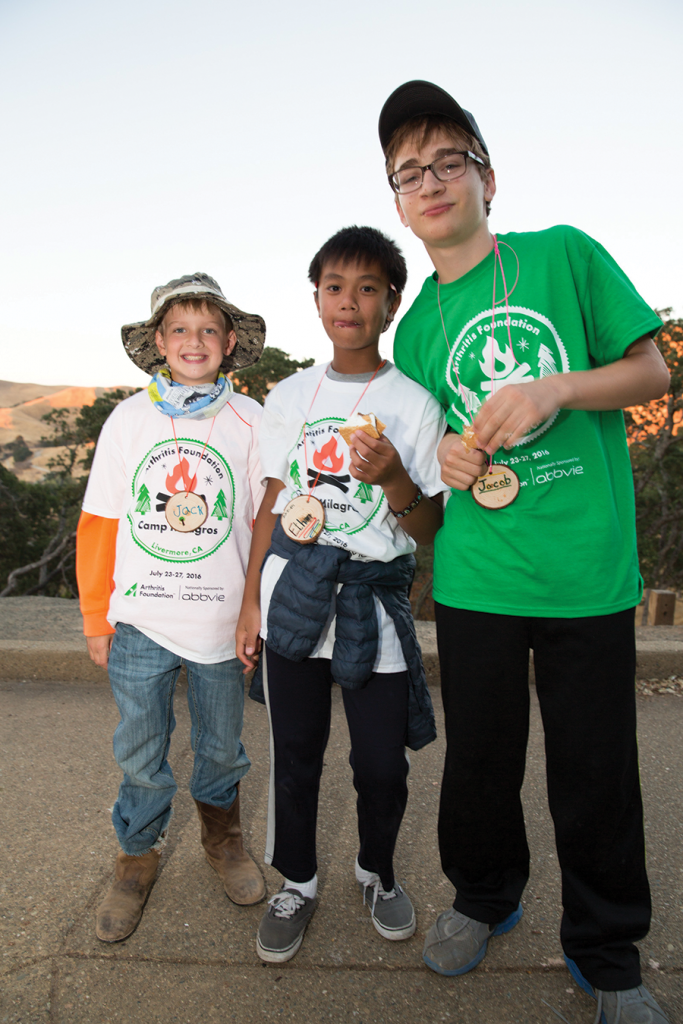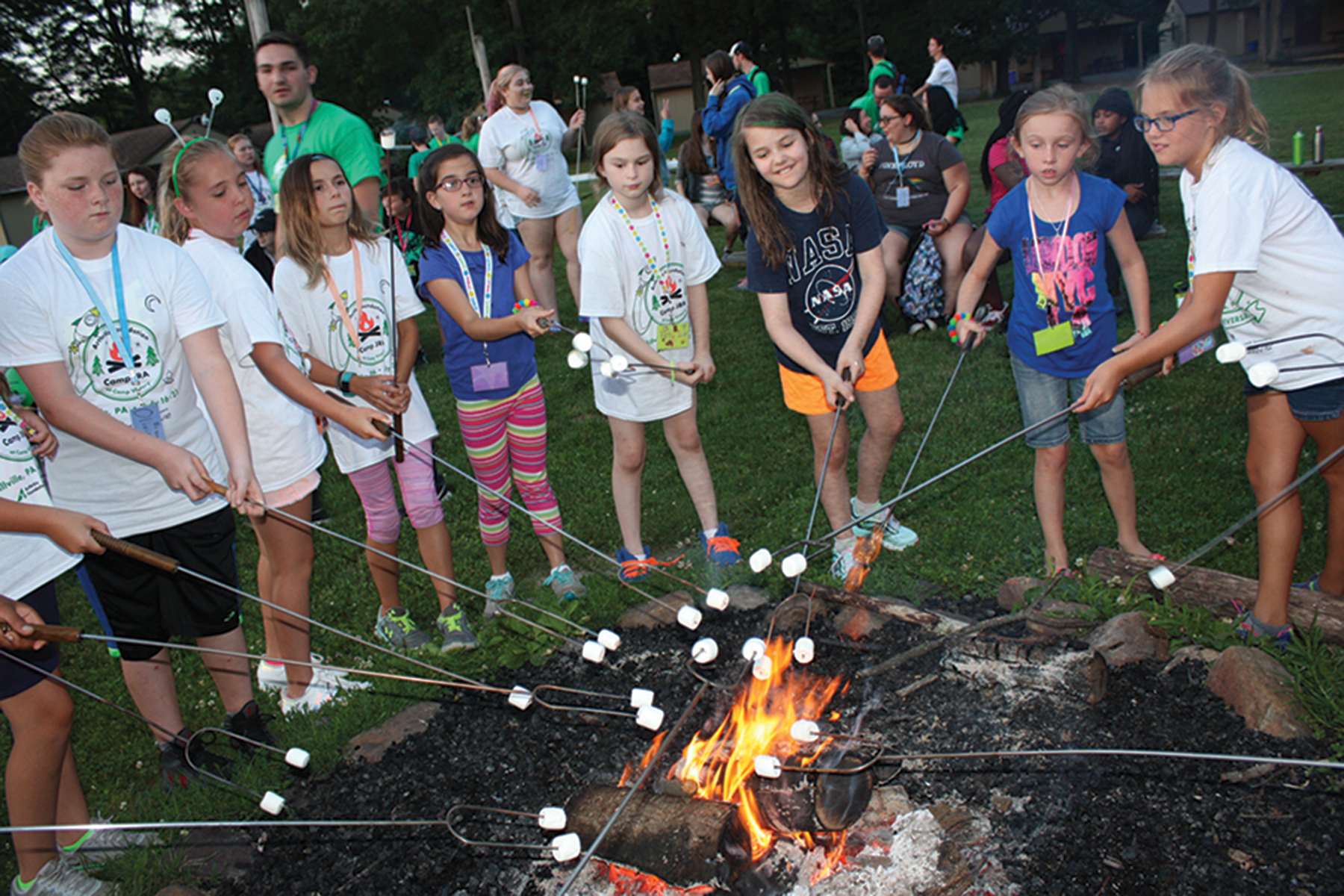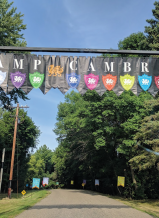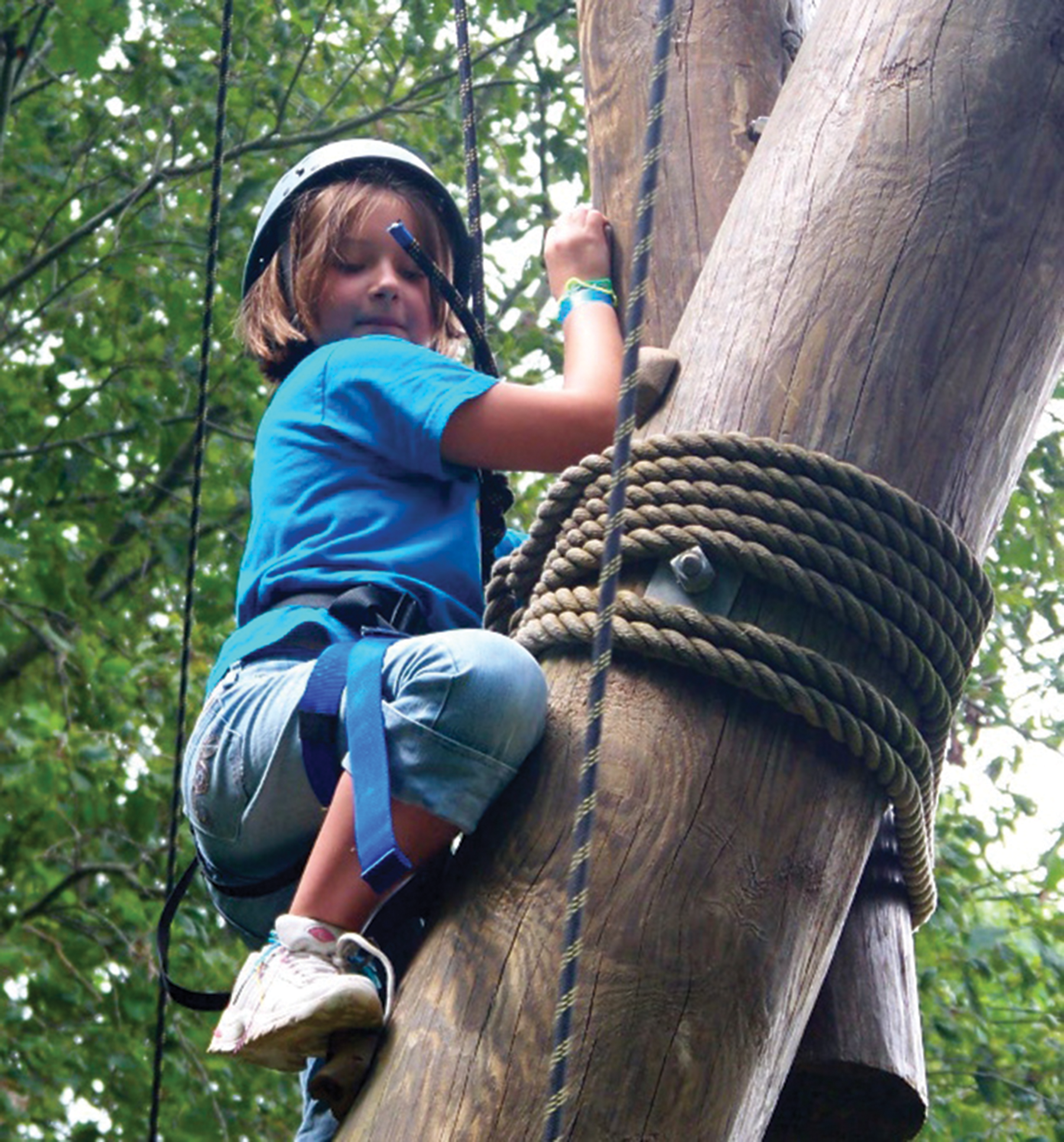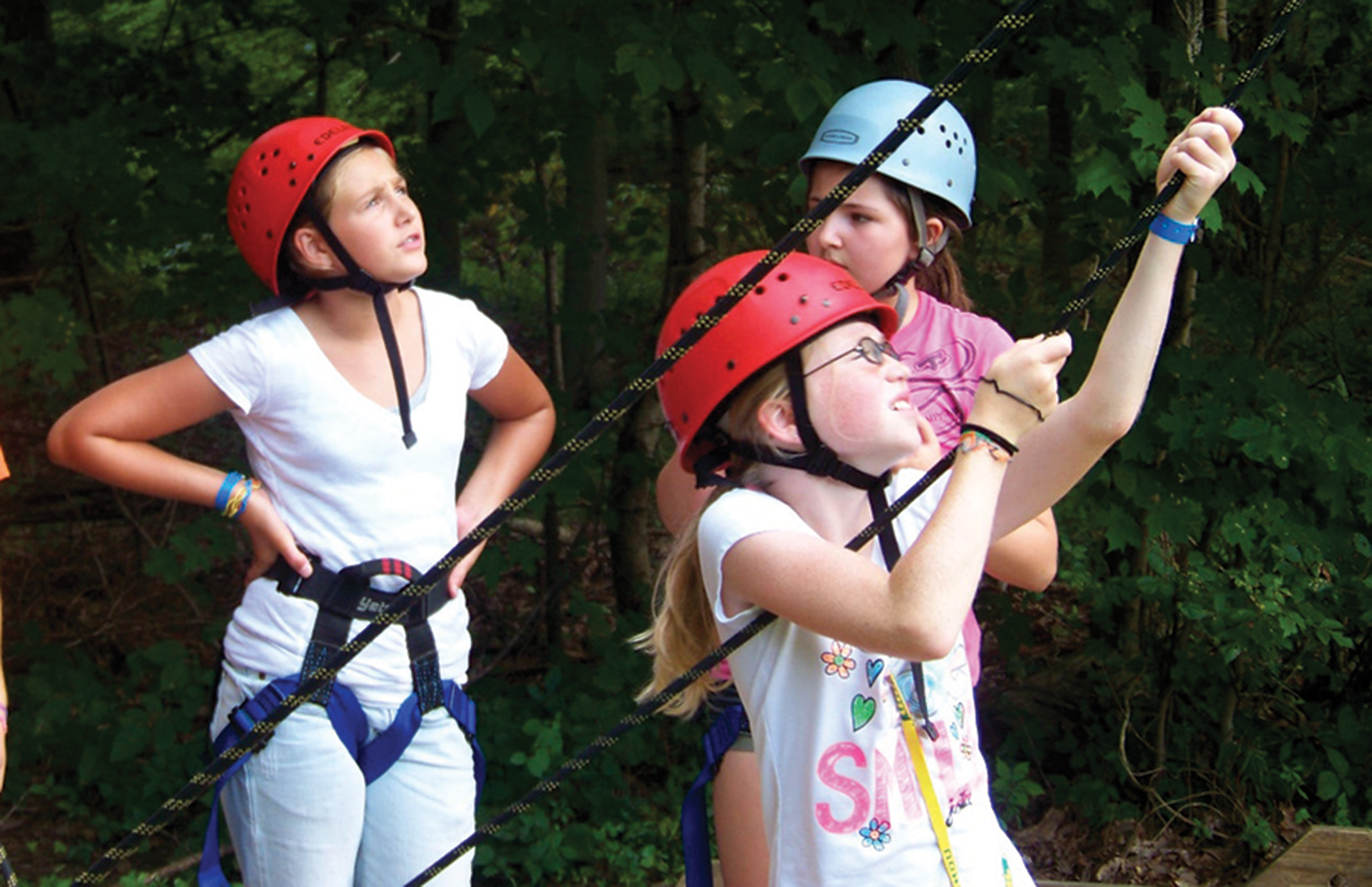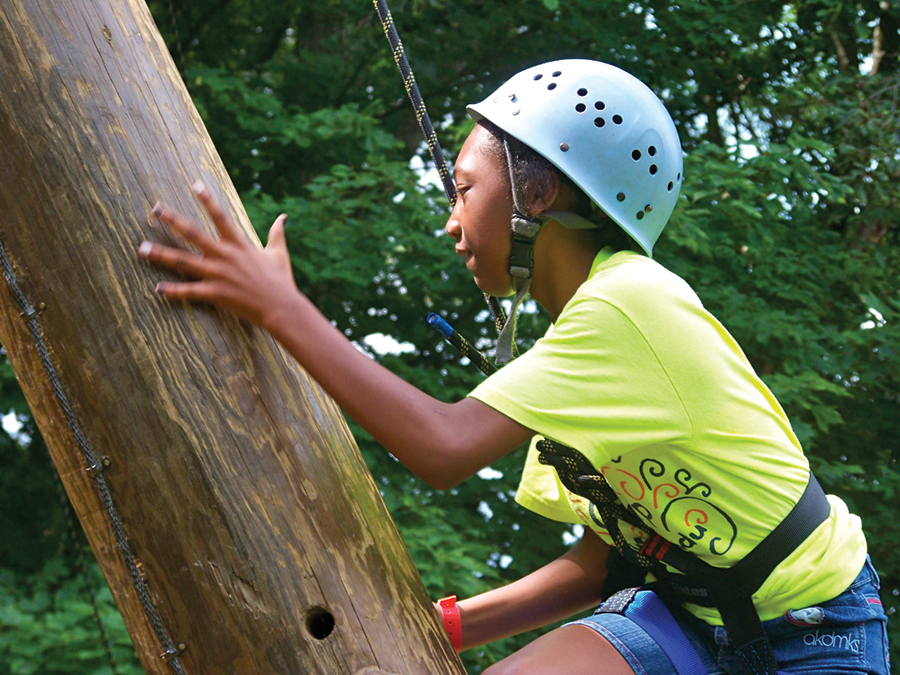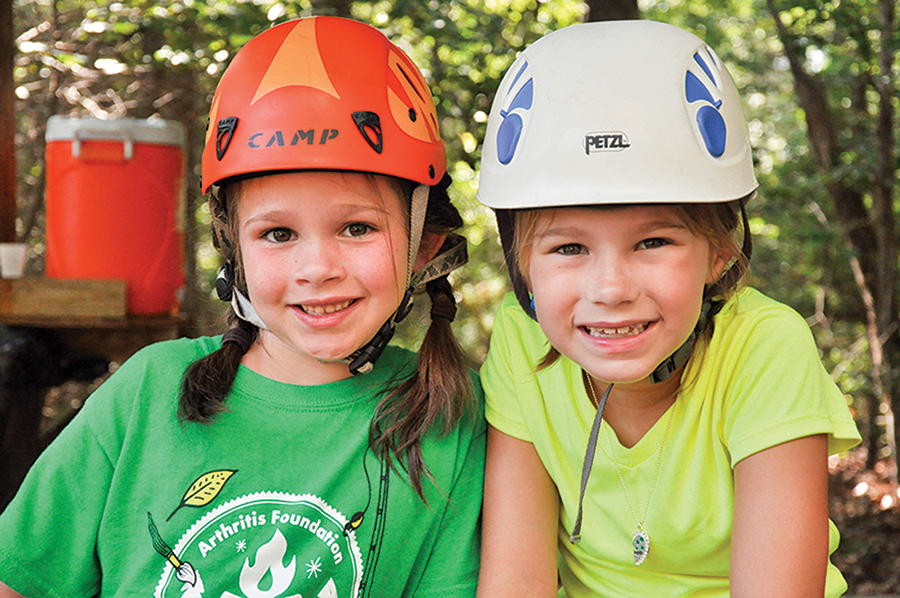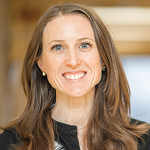
Susan Schmitz / shutterstock.com
With the wind in her hair and a smile on her face, a young girl flies through the air on the zip line at Camp Wekandu. She waves to her fellow campers on the ground and offers a thumbs up before the ride ends and one of the camp counselors lowers her from the zip line directly into her wheelchair.
Although the experience of a zip line is a thrill for anyone, it represents unprecedented freedom for a child with arthritis who has spent much of their life in a wheelchair.
Today, sleepaway camps for kids and teens with arthritis and other rheumatic diseases are held during the summer and fall in locations across the country. These camps are staffed by volunteer rheumatologists, nurses and others, who ensure every child has a safe and memorable experience.
Daniel Lovell, MD, MPH, a pediatric rheumatologist at Cincinnati Children’s Hospital Medical Center, has been leading the weeklong Camp Wekandu, held near Cincinnati, Ohio, for more than 30 years. Today, Dr. Lovell serves as the camp’s medical director.
“When our camp was first launched, we had many kids in wheelchairs, and all participants had physical limitations that prevented them from attending traditional summer camps,” Dr. Lovell says. “Our camp provided a unique venue where kids could enjoy camp activities that were adapted to their ability levels.”
Thanks to medical advances, Dr. Lovell says it’s now rare to see kids using wheelchairs or crutches at camp.
“We typically have one or two campers each summer with physical limitations, but we also have the ability to adapt activities, such as the climbing wall, rope course and the zip line, to accommodate children of all abilities,” Dr. Lovell says. “Some kids have been hesitant to try different activities because of their arthritis, but our camp gives them the opportunity to challenge themselves in a safe and supportive environment.”
Although kids at arthritis camps participate in many of the same activities found at a traditional summer camp, Dr. Lovell says the difference at arthritis camp is they can set their own pace, and if they’re limping or need to take a break, no one questions it.
Lives Changed
The Arthritis Foundation also offers camps for children. “Our juvenile arthritis camps are medically supervised by pediatric rheumatologists, rheumatology nurses, mental health professionals and other healthcare professionals who volunteer on site,” says Liz Atchison, director of Juvenile Arthritis Family Engagement for the Arthritis Foundation in Minneapolis. “At our camps, kids and teens gain a greater understanding of their own diagnosis and treatment, develop peer-to-peer support, increase independence and self-confidence, and discover new skills and interests.”
Although rheumatologists often refer young patients to arthritis camps, some families learn of the camps through the Arthritis Foundation. Fees for the camps vary, although most camps cover costs through donations and offer the experience to juvenile arthritis patients and their families for free or at a minimal cost.
For many young campers, Dr. Lovell says, arthritis camp marks their first time away from home, as well as a chance to interact with other kids who have arthritis.
“Often, parents don’t feel comfortable leaving their child with a chronic condition at a sleepaway camp,” Dr. Lovell says. “At juvenile arthritis camps, we reassure parents their kids are in a safe medical home and a supportive social and emotional environment. In addition, the experience allows campers to learn how to manage their condition and advocate for themselves.”
Campers aren’t the only ones who benefit from the experience. Dr. Lovell says that by volunteering at camps, rheumatologists gain the opportunity to observe pediatric patients outside the scope of the medical clinic setting.
“Typically, you might see a patient for 30 minutes every three to six months,” Dr. Lovell says. “At arthritis camp, doctors can see their patients during a 24-hour period and get a better sense of any challenges they may face.”
Dr. Lovell says some kids may tell their rheumatologists they’re doing fine, but at camp it’s obvious they’re experiencing joint stiffness or soldiering through activities despite being in pain. He adds that seeing pediatric patients throughout the day and night, engaging in a variety of activities, allows doctors to assess how well they are actually doing and to make modifications in their young patients’ treatment plans.
“Maybe their treatment program isn’t as effective as it could be,” Dr. Lovell says. “Sometimes, a small change in their regimen can help reduce inflammation or pain they [may] be experiencing.”
The rheumatologists volunteering at camp are rheumatology fellows and faculty members, Dr. Lovell says.
“We teach kids how to give themselves injections and develop strategies for coping with their disease,” Dr. Lovell says. “After dinner, we typically host an informal gathering where the kids can discuss disease manifestations, research updates, emotional bullying or how to best manage medications.”
Many counselors at arthritis camps were once campers themselves, and Dr. Lovell says they understand and empathize with the challenges kids face in coming to terms with their arthritis. Some kids who attend arthritis camp have been newly diagnosed. Others may have been coping with juvenile arthritis for several years, but haven’t had the opportunity to interact with other kids and teens who share their challenges.
“Having a chronic condition, like juvenile arthritis, can be isolating for many kids and teens,” Dr. Lovell says. “At camp, they are surrounded by kids and counselors who understand. It’s a place where, for one week, they can just concentrate on being a kid and having fun with their peers.”
Support
Peter Chira, MD, MS, clinical associate professor of pediatrics and a pediatric rheumatologist at the University of California San Diego School of Medicine, has volunteered with camps through the Arthritis Foundation for the past 16 years. He first began volunteering at camps in Northern California and continued after relocating to Southern California.
“We always encourage rheumatology fellows to attend camp sessions because the experience provides a better understanding of the challenges faced by pediatric rheumatology patients,” Dr. Chira says. “At camp, [the fellows] can interact with patients and see firsthand what the kids are capable of doing from both physical and functional standpoints.”
Seasoned rheumatologists also prove valuable participants at camp, providing medical support if a child suffers an injury and serving as resources at “Talk with Your Doc,” small group discussions that give campers the opportunity to ask doctors and nurses questions they may have about their condition or other health-related matters.
“We field questions on everything from their diagnosis to medication side effects to dating and how to disclose their diagnosis,” Dr. Chira says.
Sometimes, rheumatologists help campers simplify their lives. “I remember one camper who had a very complicated medication schedule that overtook her daily routine; she felt as though she were taking medications all day,” Dr. Chira says. “It was a real eye opener and offered me a chance to talk with her about her feelings about medicine, review her schedule and encourage her family to talk to their doctor about possibly simplifying her regimen to a once-a-day medication instead of [one she had to take] three times a day.”
Dr. Chira says volunteering at camp also gives rheumatologists the unique opportunity to see how their pediatric patients cope with their condition on a day-to-day basis.
“Are they avoiding certain activities because [the activities] cause pain, or are they pushing through the pain because they don’t want to feel left out?” Dr. Chira says. “And if they are [avoiding activities], how can we help them manage their condition better?”
Dr. Chira says he often encourages campers with joint stiffness to perform at-home physical therapy stretches, learn to better self-regulate or switch to less stressful activities.
Enjoyment & Education
Colleen Correll, MD, a pediatric rheumatologist and assistant professor at the rheumatology division in the University of Minnesota in Minneapolis, has been volunteering at Camp Cambria, a six-day residential camp near Maple Lake, Minn., for the past four years.
“The great thing about Camp Cambria is seeing all the kids become great friends, regardless of their abilities,” Dr. Correll says. “Their days are filled with activities—canoeing, horseback riding, archery and waterskiing—and at night we have structured educational time.”
Dr. Correll says at night the campers, who range in age from 8–17, form groups within their designated cabins to discuss issues related to their condition.
“One night, we may have a dietitian or nurse talking about diet and medications, and the next, a psychologist may discuss coping skills,” Dr. Correll says.
Dr. Correll says volunteering at an arthritis camp allows her the chance to evaluate how well her young patients manage their rheumatic disease. “Volunteering at camp has allowed me to see how arthritis impacts the daily lives of my patients. I typically arrive at camp in the morning and have breakfast with the kids, and later I’ll join in on the camp activities.”
Dr. Correll notes that Camp Cambria has a “Med Shed,” where campers receive their medications as needed during the day and also get treated for rashes, bug bites, fevers and other symptoms that may arise while they’re at camp.
“It’s wonderful to see so many kids realize they aren’t alone in coping with arthritis,” Dr. Correll says. “Many of the campers return to camp again the following year, and the friendships they make at camp last beyond the summer.”
Volunteer and refer: For information on volunteering at future arthritis camps or to locate a nearby camp to refer pediatric patients, click here.
More photos: Click the images below to load the camp photo gallery.
Linda Childers is a California-based journalist who contributes health articles to a number of national media outlets. Her stories have appeared in The California Health Report, Arthritis Today, Neurology Now, Nurse.com, Minority Nurse, Lifescript.com and many other publications. An award-winning writer, Ms. Childers lives in the San Francisco Bay Area with her husband, son and rescue dog.
